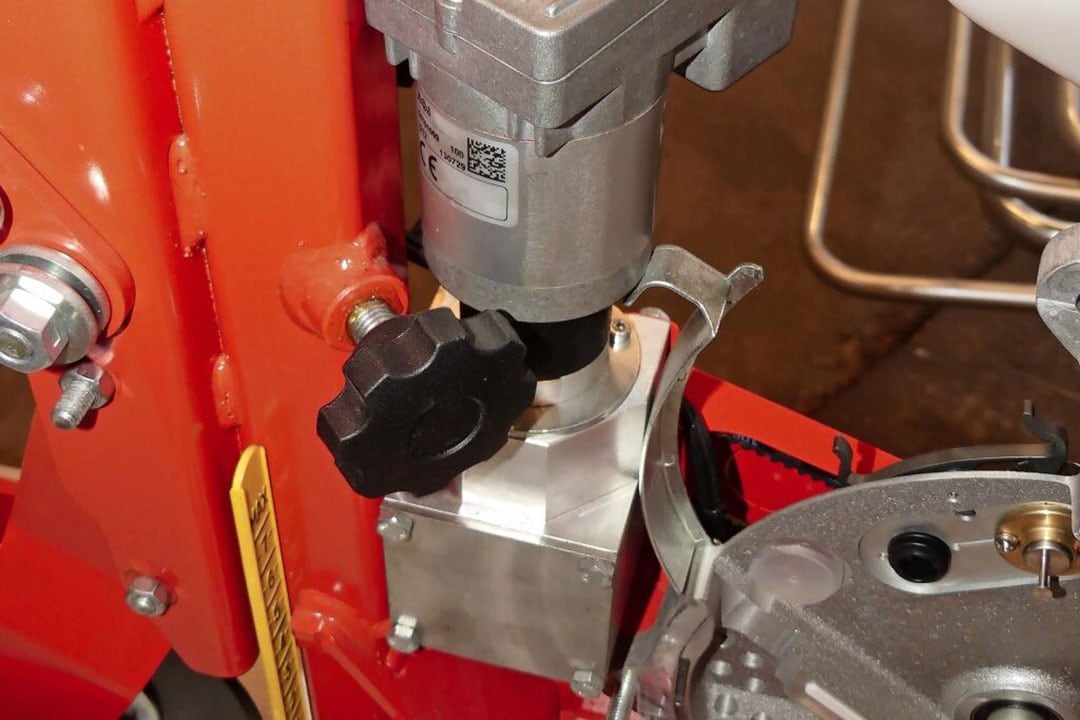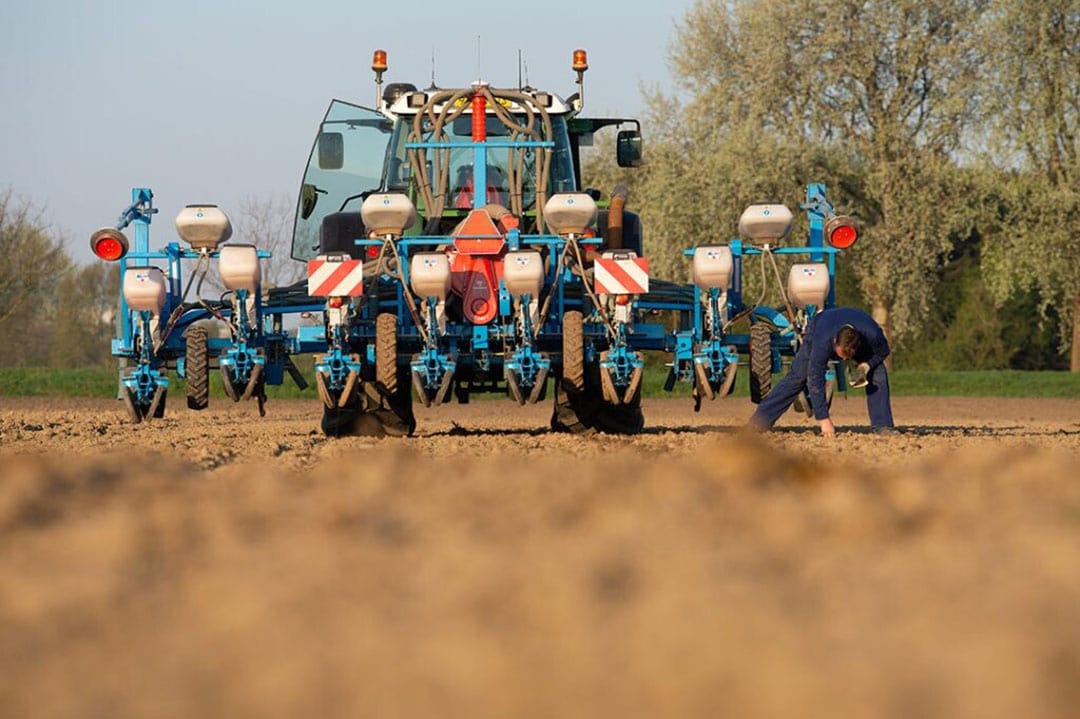12 precision planters in a row; electric drive is dominant now

Electric drive has become the dominant type of drive on precision planters. Some manufacturers offer it as standard, while others have it in the options list. Vegetable planters are the exception to the trend.
The more expensive electric drive has a couple of benefits up its sleeve that attracts both manufacturers and users. Design wise, it only requires a wire to the planter elements instead of a gearbox and chains as seen on mechanically driven planters. Users benefit from the variable seeding distances that are available at the push of a button. It’s mainly this ease of use that most farmers and contractors value.
Precision adds to precision
Increased usage of tramlines and controlled traffic farming also contributed to the increasing popularity of electric drive on precision planters. It is very easy to change (mostly increase) the seed rate of the rows closest to the tracks. Many farmers and contractors now use gps or even RTK-gps and that enables planters to automatically start and stop planting on headlands. And start and stop per row on wedges. This is especially useful with large planters on relatively small and irregularly shaped fields. It saves some seeds and adds to a uniform coverage.
Also read: How precision planters have become faster, more exact and more versatile
Electric drive also delivers opportunities to adopt different seeding patterns such as triangular (Delta) offered by Lemken on the Azurit precision seeder for instance. With the Azurit maize drill, you can switch off a single row to create an extra wide tramline while increasing the seed rate in the rows next to it. And two-dimension control such as with the Kverneland Geoseed system. With this system, you can drill in a diamond and in parallel pattern. The latter making way, literally, for hoeing in and perpendicular to the seeding direction.
If variations in soil and moisture conditions allow for variable rate seeding, an electric drive is ideal to plant VRA based on prescription maps.
Text continues below image

Vegetable planters mostly still mechanical
An exception to the above-mentioned trend are vegetable planters. Vegetables, and that includes onions, are mostly still sown with mechanically driven elements because of two main reasons. Firstly because of small row distances in combination with large working widths. This results in a significant power requirement that isn’t always disposable. If required, planter mounted generators can be an answer to this.
Secondly, vegetables and onions are mostly planted on beds that are each treated individually. The elements planting one bed can easily be switched on and off hydraulically as well. Or by using magnetic couplings. However, if you add magnetic couplings and Isobus compatible operation to a mechanical drill, the price adds up and you might as well opt for the (optional) electric drive version.
Text continues below image

As with the other precision planters, electrically driven vegetable seeder elements do offer additional precision and ease of use. Dutch specialised manufacturer Kramer for instance, offers electric drive on its ProSeeder series fitted with Italian Gaspardo planter elements. Retrofit technology is available from amongst others Ag Leader (SureDrive), ROJ (Agri-Motion X-Tend) and Topcon (Apollo).
In the table below, only electrically driven planters for chicory, legumes, maize, oil seed rape and sugar beets available in Europe are included.



